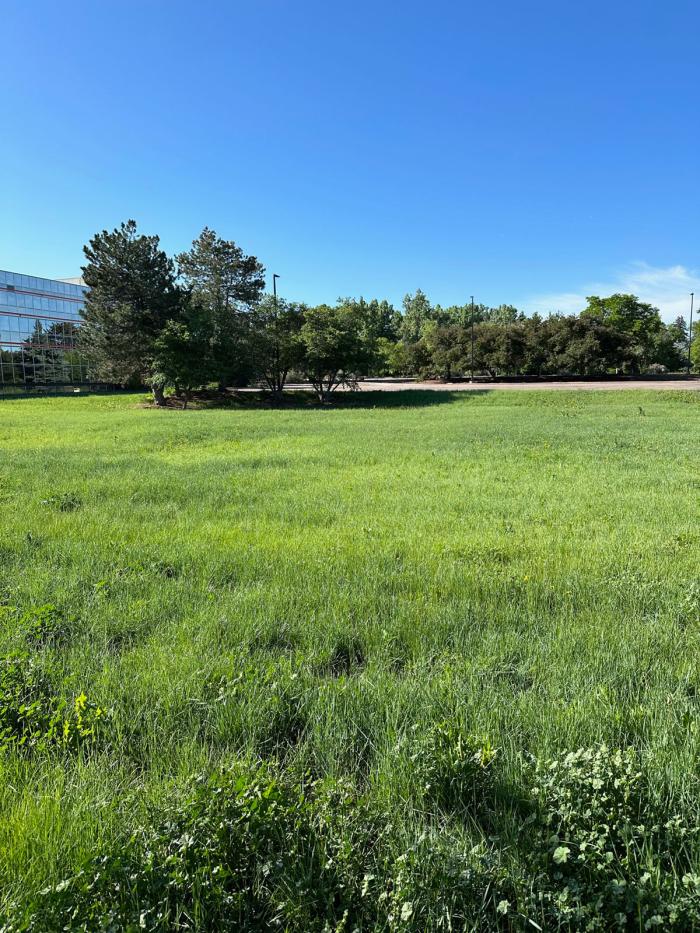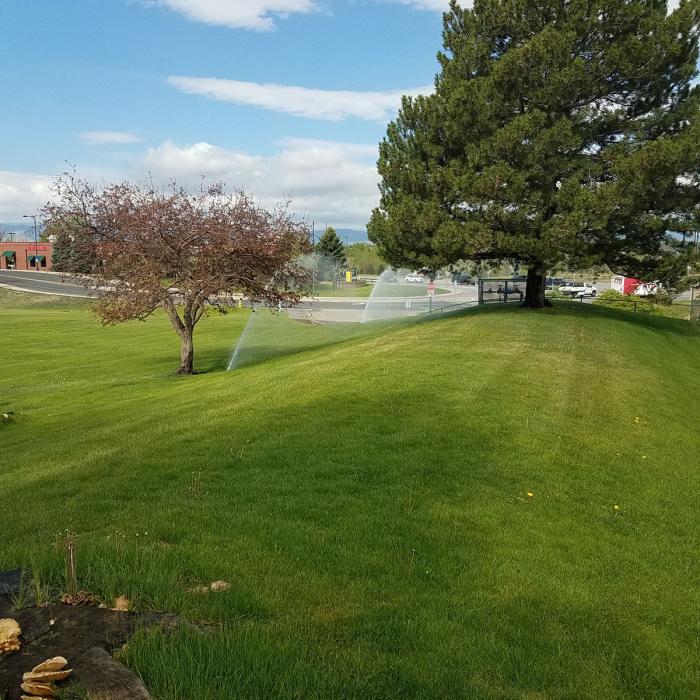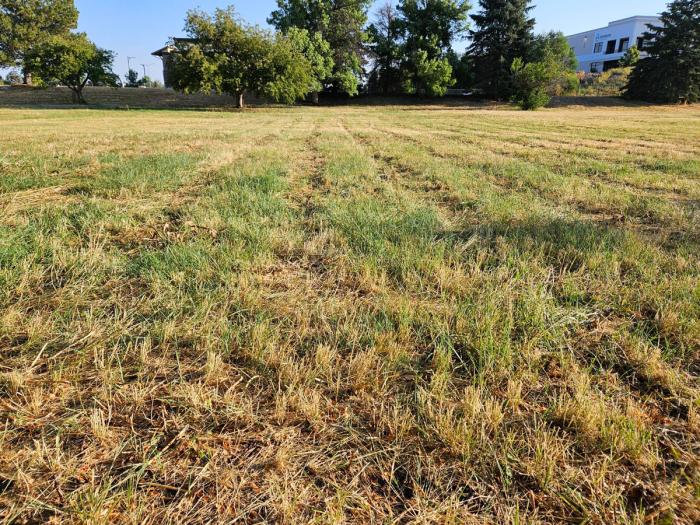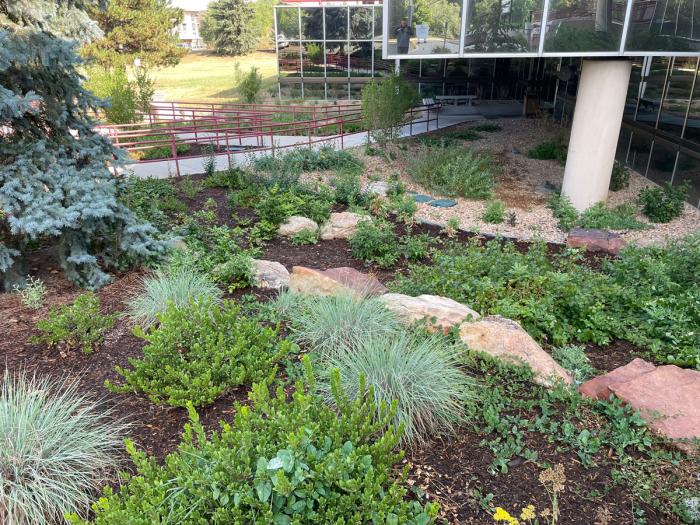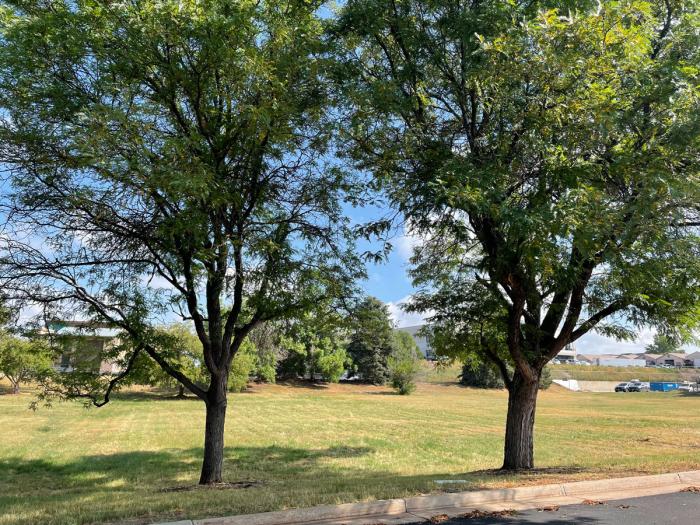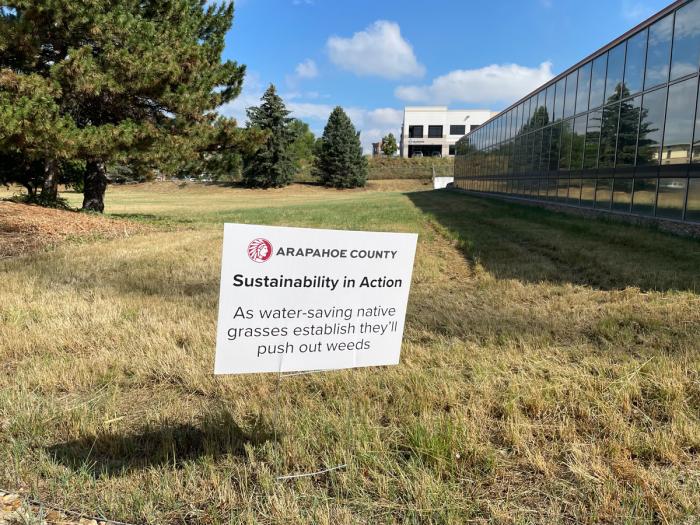Making the switch to save water
What a difference a year makes for the front of Arapahoe County’s Administration Building in Littleton.
Since the 1970s, the west side of the building had been covered by a 3-acre field of unused, water-intensive Kentucky bluegrass.
Recognizing the need to set a positive example regarding water conservation for the long term, in August 2022 the Arapahoe County Commissioners launched a plan to seed the field with a mix of prairie grasses in an effort to transform the bland expanse of bluegrass into a more natural ColoradoScape that will use less water.
Learn more about ColoradoScaping at denverwater.org/Conserve.
The project is part of Arapahoe County’s broader sustainability initiative that includes reducing water consumption indoors and outdoors.
One year later, all the planning has paid off and the grasses are flourishing.
“We’re very pleased with how the grasses have come in and are thriving,” said Lisa VanderHeyden, senior project manager of facilities and fleet at Arapahoe County. “We were lucky and got a nice boost from Mother Nature with all the rain in May and June, which really helped the grasses grow in their first season.”
The old field was chosen for landscape transformation because it was considered to have “nonfunctional grass,” which is grass that requires frequent watering from an irrigation system but is not used for activities or events.
The new field contains a mix of grasses with varying heights and textures. It resembles what the field looked like before people settled the area and started irrigating the land.
It typically takes about three years to fully establish a native grass area, in which the grasses fill in and squeeze out the weeds. Once established, the grass should be able to survive solely on the moisture provided by Mother Nature.
This is how Arapahoe County’s ColoradoScape is going. See how it started.
Arapahoe County’s staff will actively manage the field and the county anticipates saving approximately 1.5 million gallons of water per season due to the switch from the bluegrass.
“The field will have a very natural look and, like other prairie grass fields in the area, the colors will change depending on the amount of precipitation throughout the year,” VanderHeyden said.
Changing landscapes across the Southwest
The building is in Denver Water’s service area and is a great example of a greater push across the Southwest to reduce the amount of nonfunctional grass and help boost the struggling Colorado River, where Denver Water gets half of its water supply.
“We’ve been really impressed with Arapahoe County’s efforts to examine their nonfunctional grass areas and make water-saving changes,” said Austin Krcmarik, water efficiency planner at Denver Water.
“For decades, Kentucky bluegrass has been the default landscaping option for many government buildings and now we’re seeing a shift to more natural looking, water-saving ColoradoScapes.”
So, how do you start a new prairie grass field? Hear Arapahoe County officials discuss the project:
Creating a long-term plan
Krcmarik and Arapahoe County agree that there are a number of steps to take when doing large landscape transformation projects:
- Check with the local water provider for ideas and resources.
- Consult with the growing number of landscape experts who support water-saving transformations.
- Work with landscapers who are willing to research what will work best and commit to support the transformation beyond the initial implementation.
- Get the full support of management.
- Think the project through, from start to finish and consider long-term maintenance.
- Inform the public about the reasons behind the landscape change.
- Develop a plan for how to prepare the site for new seeds and plants.
- Upgrade and/or modify irrigation systems to protect mature trees if the new landscape will use less water.
- Develop a plan to manage weeds during the early years.
- Choose plants that can survive without irrigation after establishment.
Denver Water and Arapahoe County are part of the Colorado Native Grass Working Group, which includes dozens of other cities, landscape and water professionals to put together a guide on best practices for installing low-water grass landscapes. You can check out their resources and sign up for their email list at coloradonativegrass.org.
State support
The turf replacement project was awarded a grant from the Colorado Water Conservation Board for supporting the Colorado Water Plan’s goal of encouraging municipalities to reduce water use through landscape change.
“It’s been great working with Denver Water, and we appreciate their support and also the grant from the CWCB,” said Anders Nelson, Arapahoe County public information officer.
“While this is a relatively small field, we hope to learn from our work, share and improve the processes and continue to look for other opportunities to reduce our water consumption here in Arapahoe County.”


